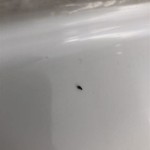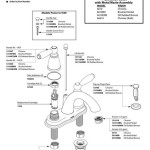Why Would My Bathroom Smell Like Fish?
A persistent fishy odor in a bathroom is a disconcerting issue that often signals a more significant underlying problem. Unlike more common bathroom smells like mildew or sewage, the distinct aroma of fish is rarely associated with typical bathroom functions. Therefore, identifying the potential sources of this unusual smell requires careful investigation and a logical approach. Understanding the various possible causes can help in effectively addressing the root of the problem and restoring a fresh, clean environment to the bathroom.
The perception of smell is subjective, and what one person describes as "fishy," another might perceive slightly differently. However, the consensus generally points to a specific range of chemical compounds often linked to decaying organic matter or certain types of electrical malfunctions. Pinpointing the exact smell is crucial, as subtle nuances can provide clues about the origin. For example, a faint, intermittent fishy odor might suggest a completely different problem compared to a strong, constant smell.
Several factors can contribute to a fishy smell in the bathroom. These factors range from relatively minor issues, like improperly disposed of seafood products, to more serious concerns, such as electrical malfunctions or plumbing problems. A systematic approach to investigating these possibilities is essential for accurate diagnosis and effective resolution.
Faulty Electrical Components
One of the most alarming and potentially dangerous reasons for a fishy smell in the bathroom is an electrical issue. Many plastic components used in electrical wiring, outlets, switches, and fixtures contain chemicals that release a fishy odor when overheated or burned. This smell can be a critical warning sign of a potential electrical fire hazard. Specifically, the smell is often associated with the breakdown of certain types of resins and polymers used in insulation and other electrical components.
Over time, electrical connections can become loose or corroded, leading to increased resistance and heat. This heat can cause the plastic insulation around wires to melt or burn, releasing the characteristic fishy odor. Similarly, faulty light fixtures, overloaded outlets, or damaged electrical appliances can also generate this smell. Dimmer switches, in particular, are known to sometimes emit this odor when they are nearing the end of their lifespan or are overloaded.
It is paramount to treat any suspected electrical smell with utmost seriousness. Immediately turn off the circuit breaker that controls the bathroom's electrical supply if the fishy odor is accompanied by other signs of electrical problems, such as flickering lights, sparking outlets, or discolored outlets or switches. A qualified electrician should be contacted without delay to inspect the wiring, outlets, switches, and fixtures to identify the source of the smell and repair any electrical faults. Attempting to diagnose or repair electrical problems without proper training and equipment can be extremely dangerous and should be avoided at all costs.
Plumbing Issues and Sewer Gases
Plumbing problems can also be a source of unpleasant odors in the bathroom, although typically, these odors are more commonly associated with sewage or mildew. However, in certain circumstances, plumbing issues can contribute to a fishy smell. The primary culprit in this scenario is often the presence of sewer gases leaking into the bathroom.
Sewer gases are composed of a complex mixture of organic compounds, including hydrogen sulfide, ammonia, and methane. While hydrogen sulfide is primarily responsible for the characteristic "rotten egg" smell often associated with sewer gas, other compounds present in the mixture can contribute to a more subtle, fishy odor. These gases can enter the bathroom through various pathways, including dried-out P-traps under sinks and tubs, cracks in drainpipes, or faulty toilet seals.
P-traps are curved sections of pipe designed to hold a small amount of water, creating a seal that prevents sewer gases from entering the bathroom. If a sink or tub is not used frequently, the water in the P-trap can evaporate, breaking the seal and allowing sewer gases to escape. Similarly, cracks in drainpipes or a loose or damaged toilet seal can also provide a pathway for these gases to enter the bathroom. In cases of neglected or improperly installed plumbing vents can also contribute to sewer gas issues. These vents are designed to allow air into the drainpipes, ensuring proper drainage and preventing a vacuum from forming that could suck water out of the P-traps.
To address plumbing-related odor issues, it is essential to thoroughly inspect all plumbing fixtures and drainpipes for signs of leaks or damage. Pouring water into infrequently used drains can help refill the P-traps and restore the seal. If a faulty toilet seal is suspected, it may need to be replaced. For more complex plumbing issues, such as cracks in drainpipes or problems with plumbing vents, it is advisable to consult a qualified plumber. Professional plumbers have the expertise and equipment to diagnose and repair plumbing problems effectively and safely.
Decaying Organic Matter and Biological Contamination
While less common, the presence of decaying organic matter or biological contamination in the bathroom can also result in a fishy odor. This is especially true in bathrooms with poor ventilation or areas prone to moisture accumulation. The smell arises from the breakdown of organic materials by bacteria and other microorganisms.
One possible source of organic matter is improperly disposed of seafood products. Even small pieces of fish or shellfish left in a trash can or accidentally flushed down the toilet can decompose and release a strong, unpleasant odor. Another potential source is mildew or mold growth. While mildew and mold are typically associated with a musty or earthy smell, certain types of mold can produce volatile organic compounds (VOCs) that contribute to a fishy odor, particularly when actively growing in damp environments.
Furthermore, dead animals, such as rodents or insects, trapped within walls or under floors can also be a source of a strong, decaying odor. While this scenario is less likely, it is still a possibility, especially in older homes or buildings with potential entry points for pests. The decomposition process releases various chemicals that can permeate the surrounding air, resulting in a noticeable smell.
Addressing organic matter-related odor issues involves thoroughly cleaning the bathroom to remove any potential sources of decay. This includes emptying and cleaning trash cans regularly, disinfecting surfaces prone to mildew or mold growth, and ensuring proper ventilation to reduce moisture accumulation. If mold or mildew is present, it should be properly removed and the underlying moisture problem addressed to prevent recurrence. In cases where a dead animal is suspected, professional pest control services may be required to locate and remove the carcass.
In summary, a fishy smell in the bathroom warrants careful investigation to determine the underlying cause. While the odor could be the result of a relatively minor issue, such as improperly disposed of seafood, it could also be a sign of a more serious problem, such as an electrical malfunction or a plumbing leak. By systematically exploring the various possibilities and taking appropriate action, it is possible to identify and address the source of the smell, restoring a fresh and healthy environment to the bathroom.

Help My Toilet Smells Like Fish

Beware Of The Fishy Smell In Your Home My Trusted Expert

Why Does My Bathroom Smell Like Fish Vinci Home Services

Common Causes Of Fishy L Odor And What To Do About It

Why Do We Find The Fishy Smell In Bathroom Livingproofmag
Fishy L Odor What Causes It And How To Treat

Why Is There A Bad Smell In My Bathroom M J Burt

Why Does My Bathroom Smell Like Fish Tiktok Search

My Stinks Now What Possible Causes Of A Strong L Smell
5 Reasons Your Dog Smells Like Fish
Related Posts







